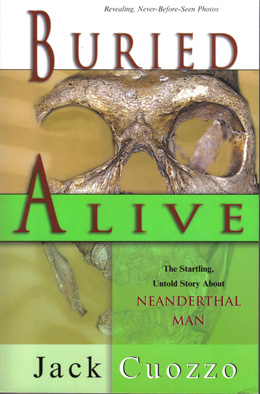On May 19, 2009, scientists unveiled a fossil primate in a ceremony at the American Museum of Natural History in New York City. Alleged to be 47 million years old, the skeleton is remarkably complete, and it bears strong resemblance to modern-day lemurs, which are members of the primate family. It was declared to be the first known member of a new genus and species, named Darwinius massillae, belonging to an extinct group of early primates called adapiforms (Beard 2009: 18).
Nicknamed Ida, the fossil caused an instant media sensation. According to Chris Beard, curator of vertebrate paleontology at the Carnegie Museum of Natural History in Pittsburgh, writing in the journal New Scientist: “The popular press immediately hailed the specimen as a ‘missing link’ in human evolution. Some called it the ‘eighth wonder of the world’. Google even incorporated an image of the fossil into its celebrated logo” (Ibid.).
However, despite the non-scientific hype by the popular press, Ida is not the missing link that so many people were hoping for, as Beard points out:
The fact that Ida retains features found in all early primates indicates that she belongs somewhere closer to the base of the tree than living lemurs do. But this does not necessarily make Ida a close relative of the anthropoids—the group of primates that includes monkeys, apes, you and me. To be connected in this way, Ida would have to have anthropoid-like features that evolved after anthropoids split away from lemurs and other early primates. Here she fails miserably: Ida is not a ‘missing link’ in human evolution (Ibid. 18-19).
Beard’s biggest complaint is not that scientists turned out to be wrong about Ida; after all, no one, not even a scientist, is infallible. His annoyance is with the fact that Ida was trumpeted by the scientific establishment and uncritically parroted by the mainstream media, creating an unjustified sensation among the general public:
If Ida herself offers only limited extra insight into primate evolution, the PR campaign which greeted her raises the marketing of science to unprecedented heights. As a practising scientist, I applaud fellow scientists’ efforts to promote their findings to a wide audience. But there remains an important difference between the type of publicity that scientists work towards and that which rock stars, sports personalities and politicians seek (Ibid. 19).
In a similar response to the Ida hype, well-known science writer Carl Zimmer commented on his weblog, The Loom:
If the world goes crazy for a lovely fossil, that’s fine with me. But if that fossil releases some kind of mysterious brain ray that makes people say crazy things and write lazy articles, a serious swarm of flies ends up in my ointment (Ibid.).
Statements like these are likely the reason that, only a few months after the Ida fossil was revealed, it has quietly disappeared from the headlines, and few scientists are touting it as the missing link.
Reference:
Beard, C. 2009. “A Fine Fossil—But a Missing Link She’s Not.” New Scientist 202, no. 2710.
Recommended Resources:

Refuting Evolution is a hard-hitting critique of the most up-to-date arguments for evolution, to challenge educators, students and parents. It is a powerful, yet concise summary of the arguments against evolution and for creation. It will stimulate much discussion and help students and teachers think more critically about origins. Jonathan Sarfati, Ph.D.
 Buried Alive tells a story left untold: this is the startling truth about Neanderthal Man. Jack Cuozzo, an orthodontist, has fashioned a research book that will grab the attention of scientists and laypersons alike, for the Neanderthal Man has finally come forth to tell a shocking story. This scientific analysis illuminates the post-Babel period, where the Bible records longer life-spans than today. Jack Cuozzo.
Buried Alive tells a story left untold: this is the startling truth about Neanderthal Man. Jack Cuozzo, an orthodontist, has fashioned a research book that will grab the attention of scientists and laypersons alike, for the Neanderthal Man has finally come forth to tell a shocking story. This scientific analysis illuminates the post-Babel period, where the Bible records longer life-spans than today. Jack Cuozzo.